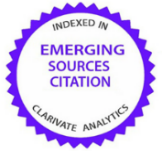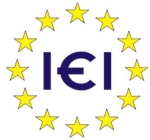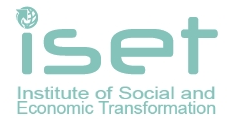Descriptive model of influence of ownership concentration on the corporate capital management
Abstract
Introduction. Significantly important factors that define the company's efficiency are the structure of proprietorship and capital structure. Therefore, the item of the relationship between these factors is reflected in the works of scientists. The necessary issue is the pick of correlation between own and borrowed funds since the optimum structure of capital leads to magnification of the market value based on company performance results. The relevance of deciding on the capital structure determines the feasibility of determining the effect of concentrated ownership on capital structure. In an unstable political, social, legal, and economic environment, ownership concentration turns into a compensatory mechanism that fills numerous institutional gaps. Concentrated possession enables it possible to influence the capital structure through agency costs.
Aim and tasks. The main purpose of the article is to determine the link between concentration level of ownership and capital structure, between ownership structure and leverage. This paper substantiates the problem of “principal-agent” to identify problematic issues to further develop recommendations to strengthen appropriate market incentives.
Results. The paper shows that the problem of the “principal-agent” exists independently of the rate of ownership concentration in the corporation. Agency costs are one of the determining factors in the composition of a corporation’s capital. This paper has clearly shown approaches to identifying the nature of the effect of ownership structure on the capital structure. It has been established how this influence is carried out, taking into account the mismatch of various groups of owners' interests and the effect of their “entrenching”, as well as the consequences of monitoring and expropriation with a highly concentrated structure of ownership.
Conclusions. The choice of the ratio of own and borrowed funds depends on the actual ownership structure. Assumptions are made, the increase in the corporation's leverage owing to an increase in the blockholders shares. There is a reciprocal interconnection between leverage and agency costs. Because changing leverage is an instrument that helps to overcome agency conflicts and not just only proves is the result of their presence. The selected special characteristics gave grounds to conclude that the adjustment of the ratio of a company's debt to the value of its equity also depends on the goal of management solutions, as well as the current facility and prospects of the corporation.
Keywords:
ownership structure, capital structure, corporation, leverage, corporate governance, agency costs.References
2. Becht, M. (2003). Current Issues in European Corporate Governance. Background Note prepared for the Euro 50 Group Meeting on Corporate Governance. European Investment Bank,.
3. Frank, E.V. (2011). Agentskaya problema v sisteme korporativnogo upravleniya. Ekonomika, predprinimatelstvo i pravo, 7, 29-36.
4. Claire, E. C., Jensen, M. R. H., Jahera, J. S., Raymond, J. E. (1999). Agency problems and the simultaneity of financial decision making. The role of institutional ownership. International Review of Financial Analysis, 8, 77–197.
5. Hongxia, Li, Liming, Cui (2003). Empirical study of capital structure on agency costs in Chinese listed firms. Nature and Science, 1(1), 12-20.
6. Madhani, P. M. (2016). Ownership Concentration, Corporate Governance and Disclosure Practices: A Study of Firms Listed in Bombay Stock Exchange. The IUP Journal of Corporate Governance, 15(4), 7-36.
7. Mardones, J. G., & Cuneo, G. R. (2020). Capital structure and performance in Latin American companies. Economic Research-Ekonomska Istraživanja, 33(1), 2171-2188.
8. Khatib, S.F.A., Abdullah, D.F., Hendrawaty, E., Yahaya, I.S. (2020) Corporate Governance Mechanisms and Capital Structure. International Journal of Advanced Science and Technology, 29 (10S), 993-1003.
9. Al-Thuneibat, A. (2018). The Relationship between the Ownership Structure, Capital Structure and Performance. Journal of Accounting - Business & Management, 25, 1-20.
10. Granado‐Peiró, N., López‐Gracia, J. (2017). Corporate Governance and Capital Structure: A Spanish Study. European Management Review (EMR), 14(1), 33-45.
11. Brailsford, T. J., Oliver, B. R., Pua, S. (2000) Theory and evidence on the relationship between ownership structure and capital structure. Department of Commerce, Australian National University, pp. 1-34.
12. Holderness, C.G., Kroszner, R. S., Sheehan, D. P. (1999). Were the good old days that good? Changes in managerial stock ownership since the Great. Depression.Journal of Finance, 54, 435-469.
13. Gerasimov, S.M. (2012). Empiricheskie issledovaniya strukturyi kapitala kompaniy na razvivayuschihsya ryinkah: spetsifika i metodologiya. Korporativnyie finansyi, № 1 (21), S. 97-109.
14. De Miguel, A., Pindado, J., & De La Torre, C. (2004). Ownership Structure and Firm Value: New Evidence from Spain. Strategic Management Journal, 25(12), 1199-1207. https://doi.org/10.1002/smj.430
15. Faccio, M., Lang, L., Young, L. (2007). Debt and Expropriation. Purdue CIBER Working Papers. Paper 50.
16. Garcia, J.P., De la Torre Olvera, C. (2001). A new approach to explaining capital structure. Universidad de Salamanca.
17. Shleifer, A. A, Vishny, R.W. (1997). Survey of corporate governance. Journal of Finance, 52, 737-783
18. La Porta, R., Lopez-de-Silanes, F., Shleifer, A. (1999). Corporate ownership around the world. Journal of Finance, 54, 471-517.
19. Edwards, J. S. S., & Weichenrieder, A. J. (2009). Control rights, pyramids, and the measurement of ownership concentration. Journal of Economic Behavior & Organization, 72(1), 489–508. https://doi.org/10.1016/j.jebo.2009.05.016
20. Doszhan, R., Nurmaganbetova, A., Pukala, R., Yessenova, G., Omar, S., & Sabidullina, A. (2020). New challenges in the financial management under the influence of financial technology. E3S Web of Conferences, 159, 04015.
21. Hutsaliuk, O., Koval, V., Tsimoshynska, O., Koval, M., Skyba, H. (2020). Risk Management of Forming Enterprises Integration Corporate Strategy. TEM Journal, 9(4), 1514-1523. https://doi.org/10.18421/TEM94-26
22. Pukała, R. (2016). Use of Neural Networks in Risk Assessment and Optimization of Insurance Cover in Innovative Enterprises. Ekonomia i Zarzadzanie, 8(3), 43–56. https://doi.org/10.1515/emj-2016-0023
23. Pukala, R. (2014). Insurance as a tool to limit corporate financial losses resulted by IT risk materialization. Economic Annals -ХХІ, 07-08 (1), 84-87.
If the article is accepted for publication in the journal «Economics. Ecology. Socium» the author must sign an agreementon transfer of copyright. The agreement is sent to the postal (original) or e-mail address (scanned copy) of the journal editions.






















